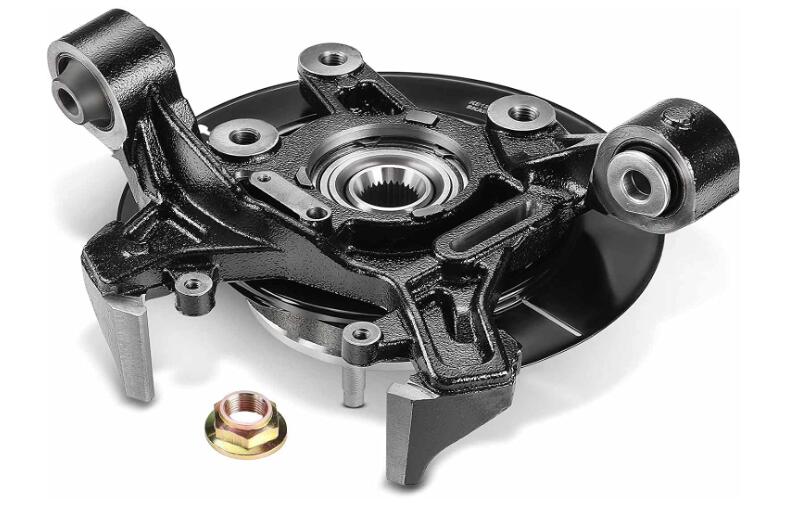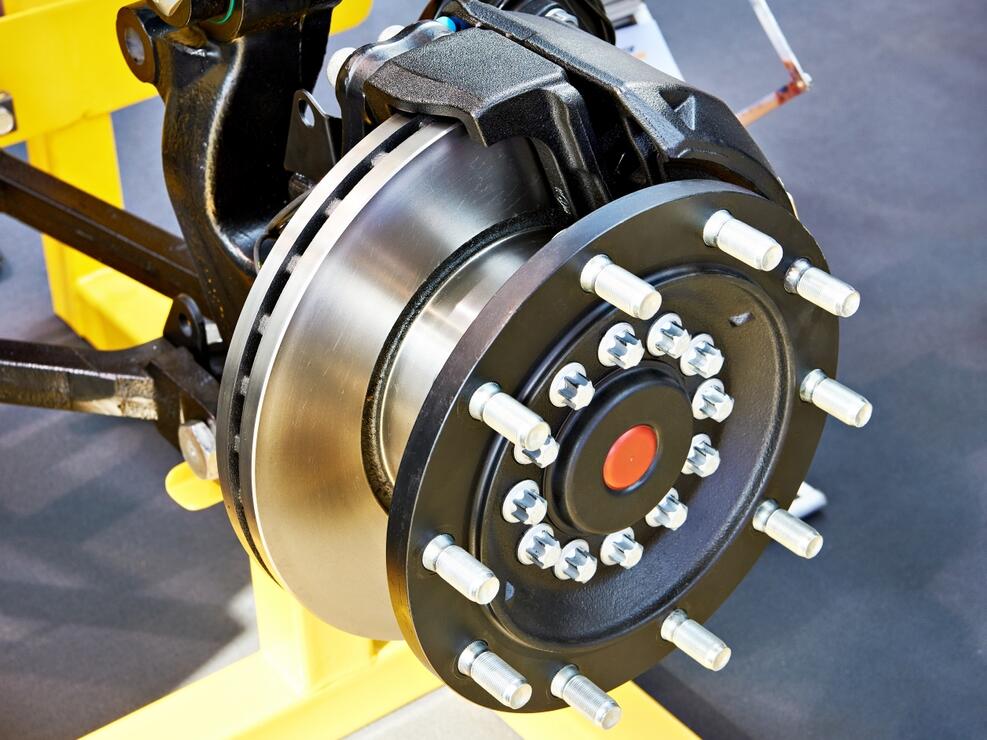Introduction:
In the vast realm of automotive engineering, wheel hub bearings are pivotal components ensuring smooth vehicular movement.
Yet, behind the scenes of this essential component is the intricate world of metallurgy, governing its performance, resilience, and lifespan.
This article delves into the metallurgical considerations influencing wheel hub bearing performance and longevity.

1. The Fundamental Connection: Metallurgy and Wheel Hub Bearings
The connection between metallurgy and wheel hub bearings lies in the materials used.
Metallurgy is the science of extracting metals from their ores, refining them, and preparing them for use.
For wheel hub bearings, the choice of metal and its treatment directly dictates the bearing’s operational characteristics.
Composition: The elemental composition of a bearing determines its intrinsic properties.
The specific metals and alloys control factors like tensile strength, hardness, and flexibility.
Microstructure: At a microscopic level, the arrangement and structure of grains within the metal influence properties like toughness, fatigue strength, and wear resistance.
The way these grains form, grow and interact is a direct consequence of metallurgical processes.

2. Steel: The Backbone of Wheel Hub Bearings
Steel, an alloy of iron and carbon, is the predominant material for wheel hub bearings. However, not all steels are created equal.
Carbon Content: The amount of carbon in steel can vary, leading to different classifications such as low-carbon, medium-carbon, and high-carbon steels.
For wheel hub bearings, medium to high-carbon steels are preferred for their optimal blend of hardness and toughness.
Alloying Elements: Additional elements like chromium, molybdenum, and nickel can be added to impart specific properties.
For instance, chromium enhances wear and corrosion resistance, vital for bearings exposed to varied environmental conditions.
Heat Treatment: Steel’s properties can be significantly altered through heat treatments.
Processes like tempering, annealing, or quenching can change the steel’s hardness, flexibility, and resilience, making it more suitable for bearing applications.

3. Advanced Alloys: Pushing the Boundaries of Performance
As technology progresses, there’s a constant push to develop materials that offer better performance, reduced weight, and increased lifespan.
Stainless Steel: For applications where corrosion resistance is paramount, stainless steel alloyed with significant amounts of chromium is chosen.
Their innate ability to resist rusting and staining makes them ideal for challenging environments.
Ceramic Hybrids: The introduction of ceramic materials, especially in rolling elements, is gaining traction.
Ceramics offer reduced friction, higher hardness, and thermal stability. In hybrid setups, steel races are used with ceramic balls or rollers, combining the best of both worlds.
Super Alloys: These are a group of alloys designed to maintain their properties in extreme conditions.
While their use in wheel hub bearings is limited, niche applications might employ such alloys for their unparalleled attributes, especially in high-performance scenarios.

4. Metallurgical Processes Enhancing Bearing Life
The journey from raw metal to a finished wheel hub bearing involves several metallurgical processes that enhance life.
Forging: Forging involves shaping the metal using localized compressive forces.
Forged bearings exhibit a more consistent and refined grain structure, offering better strength and fatigue properties.
Heat Treatment: As mentioned, heat treatments can refine the properties of steel.
For bearings, processes like case hardening are used, where the surface layer of the metal is hardened, providing wear resistance while the core remains tough.
Surface Finishing: Even minute imperfections on the bearing surface can lead to premature failures.
Metallurgical processes like grinding and polishing ensure the bearing surfaces are impeccably smooth, reducing friction and wear.

5. Quality Control and Metallurgical Analysis
Ensuring the metallurgical integrity of wheel hub bearings is essential for their reliable performance.
Spectroscopic Analysis: Techniques like spectroscopy allow manufacturers to determine the exact elemental composition of the bearing material, ensuring it matches the desired specifications.
Microstructural Analysis: Microscopes and other advanced imaging tools enable the examination of the metal’s microstructure, ensuring suitable grain structures and sizes.
Hardness and Toughness Testing: Standardized tests assess the metal’s hardness and toughness, guaranteeing they meet or exceed the required benchmarks for bearing applications.

6. Innovations in Metallurgy: Ushering in the Next Generation of Bearings
The relentless quest for optimization has ushered in metallurgical breakthroughs, reshaping the bearing industry.
Nanostructured Steels: One of the latest advancements is the development of steels with nano-sized structures.
These materials possess superior strength and toughness compared to conventional steels.
When applied to wheel hub bearings, this can translate into smaller, more efficient designs that carry the same or even greater loads.
Nitriding and Other Surface Treatments: Nitriding is a heat-treating process introducing nitrogen into the bearing surface.
This results in a complex, wear-resistant layer that significantly enhances bearing longevity, particularly in high-stress, high-speed scenarios.
Coatings for Enhanced Performance: Metallurgical innovations aren’t just about the core material.
Applying specialized coatings, like diamond-like carbon (DLC), can provide an added layer of protection, minimizing friction and enhancing wear resistance.

7. Metallurgical Challenges and Environmental Considerations
While metallurgy has advanced the cause of wheel hub bearings immensely, it’s essential to understand and navigate its challenges.
Sustainability: The extraction and processing of metals have significant environmental impacts.
The bearing industry, including stalwarts like Wana Auto Parts Co., Ltd., increasingly focuses on sustainable practices, from sourcing recycled materials to implementing energy-efficient manufacturing processes.
Consistency in Mass Production: Achieving consistent metallurgical properties across thousands of bearings is challenging.
Minute variations in alloying elements or heat treatment can result in different performance characteristics, making quality control paramount.

8. Future Prospects: Metallurgy and Beyond
With technological advancements, the marriage between metallurgy and wheel hub-bearing design is expected to grow even more vital.
Integration with Sensor Technology: The rise of “smart” bearings embedded with sensors to monitor conditions and real-time performance is becoming a reality.
This fusion of metallurgy with electronics promises bearings that can predict their maintenance needs or warn about potential failures.
Custom Alloys for Specific Applications: As the automotive world diversifies, with electric vehicles and high-performance sports cars sharing the road, custom alloys tailored to specific applications will become the norm, ensuring optimal performance in every scenario.

9. Environmentally Friendly Metallurgy: A New Era for Wheel Hub Bearings
The metallurgical practices employed in producing wheel hub bearings are transforming with the global emphasis on sustainability.
Recycled Materials: An increasing percentage of wheel hub bearings now incorporate metals from recycled components.
This reduces the environmental footprint of mining activities and offers a sustainable way to meet the industry’s ever-growing demands.
Reduced Hazardous Emissions: Many metallurgical processes release hazardous emissions into the environment.
Modern practices prioritize eco-friendly methods that limit or eliminate such emissions, ensuring a greener manufacturing process.

10. Custom-Tailored Solutions through Metallurgy
Given the diversity of applications in the automotive industry, one-size-fits-all is no longer viable.
Metallurgy offers the flexibility to design custom solutions tailored to specific needs.
Varied Operating Conditions: Cars operating in colder climates have different bearing requirements than those in desert conditions.
Metallurgy allows for creation of alloys that perform optimally in specific environments, ensuring longevity and efficiency.
Specialized Performance Needs: High-performance vehicles, commercial trucks, and electric vehicles might all have unique bearing needs.
Through metallurgical innovations, manufacturers like Wana Auto Parts Co., Ltd. can craft specialized solutions for each category, ensuring peak performance.

11. The Importance of Continuous Research & Development
In the fast-evolving world of automotive components, staying static is not an option.
Continuous research and development are vital to ensure that metallurgical practices align with the latest industry needs.
Collaborations with Universities: Many leading manufacturers are partnering with academic institutions, leveraging their research capabilities to discover novel metallurgical solutions that can redefine wheel hub-bearing performance.
In-house R&D Units: Companies with a vision for the future, like Wana Auto Parts Co., Ltd., invest heavily in in-house R&D units.
These innovation hubs are the birthplace of next-generation bearing solutions, ensuring the company stays ahead of industry trends.

12. Educating the Customer: Beyond the Product
In a world where information is paramount, customers must understand the value and significance of the metallurgical practices behind their wheel hub bearings.
Transparent Manufacturing Practices: Enlightened companies are offering insights into their manufacturing practices, allowing customers to appreciate the quality, innovation, and sustainability efforts behind each product.
Workshops & Seminars: By conducting workshops, seminars, and training sessions, manufacturers can educate their B2B clientele about the latest metallurgy, helping them make informed choices.

Conclusion:
The intricate dance between metallurgy and wheel hub bearing performance is a testament to engineering excellence.
As challenges mount and the industry evolves, metallurgy provides answers, solutions, and innovations that keep the world moving smoothly.
At Wana Auto Parts Co., Ltd., our journey is intertwined with the marvels of metallurgy, ensuring that every bearing we produce is a masterpiece of engineering, commitment, and quality.




